Resteverwertung textiler Art - Opus Consutum / what to do with fabric scraps
Geschrieben in Sticken am 14.09.2016 von Eva-Maria
Wie ihr sicherlich bereits wisst, war Stoff im Mittelalter ein kostbares Gut. Die Produktion war mit einem hohen Arbeitsaufwand verbunden (siehe Blog-Serie zur Textilproduktion) und dementsprechend sorgsam wurde mit dem fertigen Stoffballen umgegangen: Kleidung wurde möglichst sparsam zugeschnitten, bei Bedarf umgenäht und generell bis zum letzten Fetzen verwertet. Auch die Stoffreste, die beim Zuschnitt anfielen, fanden noch ihre Bestimmung. Jene, die zu klein waren, um noch zu etwas vernäht werden zu können aber qualitativ zu gut, um sie dem Lumpensammler zu übergeben, wurden gerne für OPUS CONSUTUM verwendet. Mit dieser Applikationstechnik (darüber habe ich hier geschrieben) konnten relativ schnell religöse wie profane Wandteppiche, Pferdeüberwürfe, Fahnen oder Polster gefertigt werden. Auch ich wollte meinen Stoffresten ein zweites Leben ermöglichen und habe mich entschlossen, ein Schaustück für meine Stickereisammlung zu machen.
Benötigtes Material: Stickgrund aus Wolltuch oder Leinen, Wollstoff (Reste), Woll- oder Leinengarn, vergoldete Lederstreifen oder dickes Seidengarn (optional);
Verwendete Sticharten: Überwendlingsstich, Knopflochstich, Oberflächliche Anlegetechnik;
As you certainly know, fabric was a valuable thing in medieval times. As its production consumed lots of time and effort (see blog series about fabric production (in german)), the finished material was used thoughtfully: clothing was cut economically, adapted and re-used and even the scraps had their purposes. The bigger ones were sewn into children's clothing or other small items, the shredds were sold to the ragpicker and the small, but fine ones were given a new life - as part of an OPUS CONSUTUM embroidery. This technique is more appliqué than "real" embroidery (see post here) and was used to produce wall hangings, horse coverings, flags or pillows. My opus consutum project is to make a show piece for my embroidery collection.
Materials needed: background fabric of wool or linen, scraps of (fulled) wool; Wool or linen thread, gilded leather strips or thick silk thread (optional);
Stitches: overcast stitch, buttonhole stitch, surface couching;
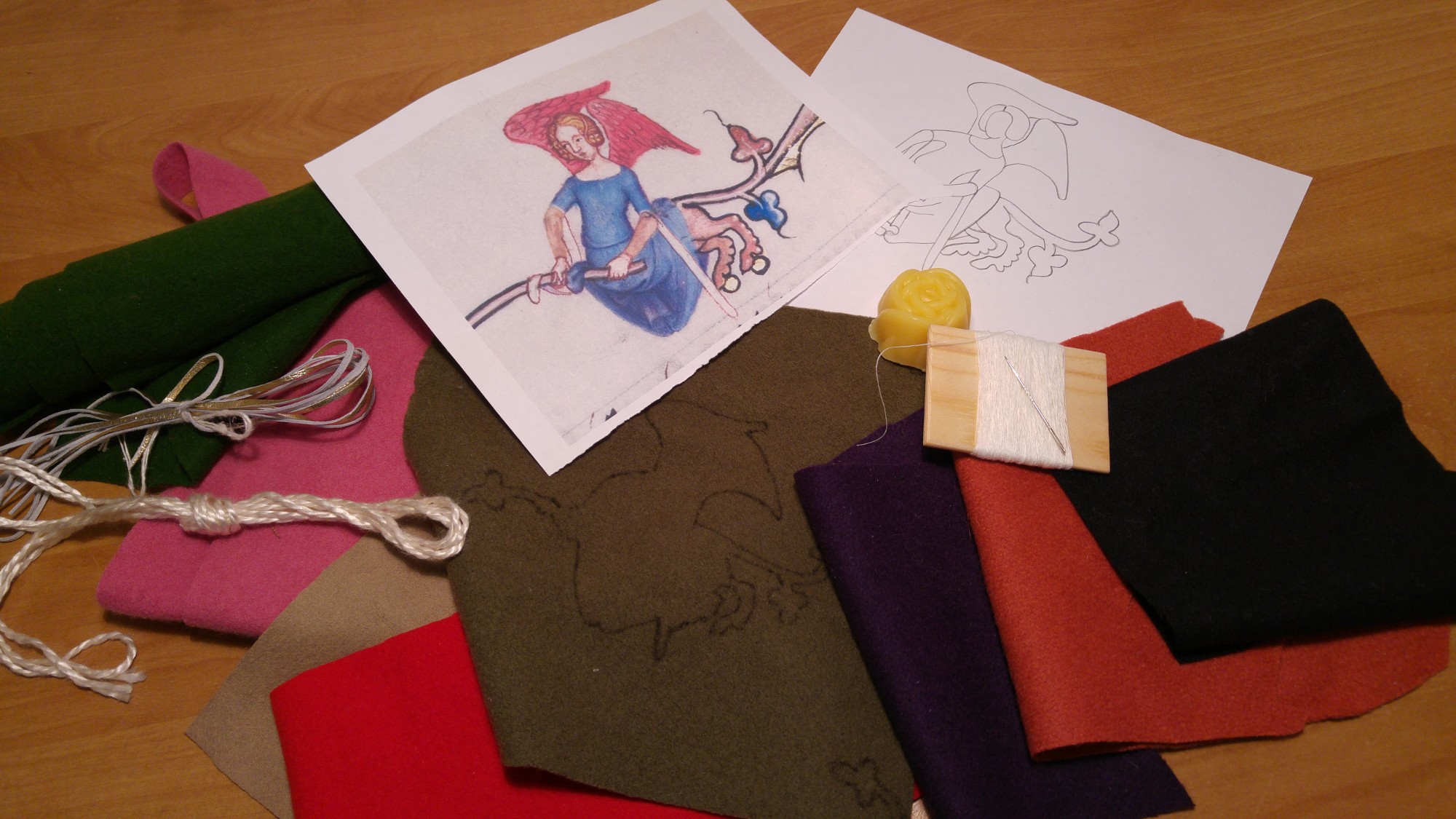
An overview of the materials needed: a pattern, various colorful fabric scraps, needle and linen thread as well as gilded leather strips and thick silk thread for the embellishments.
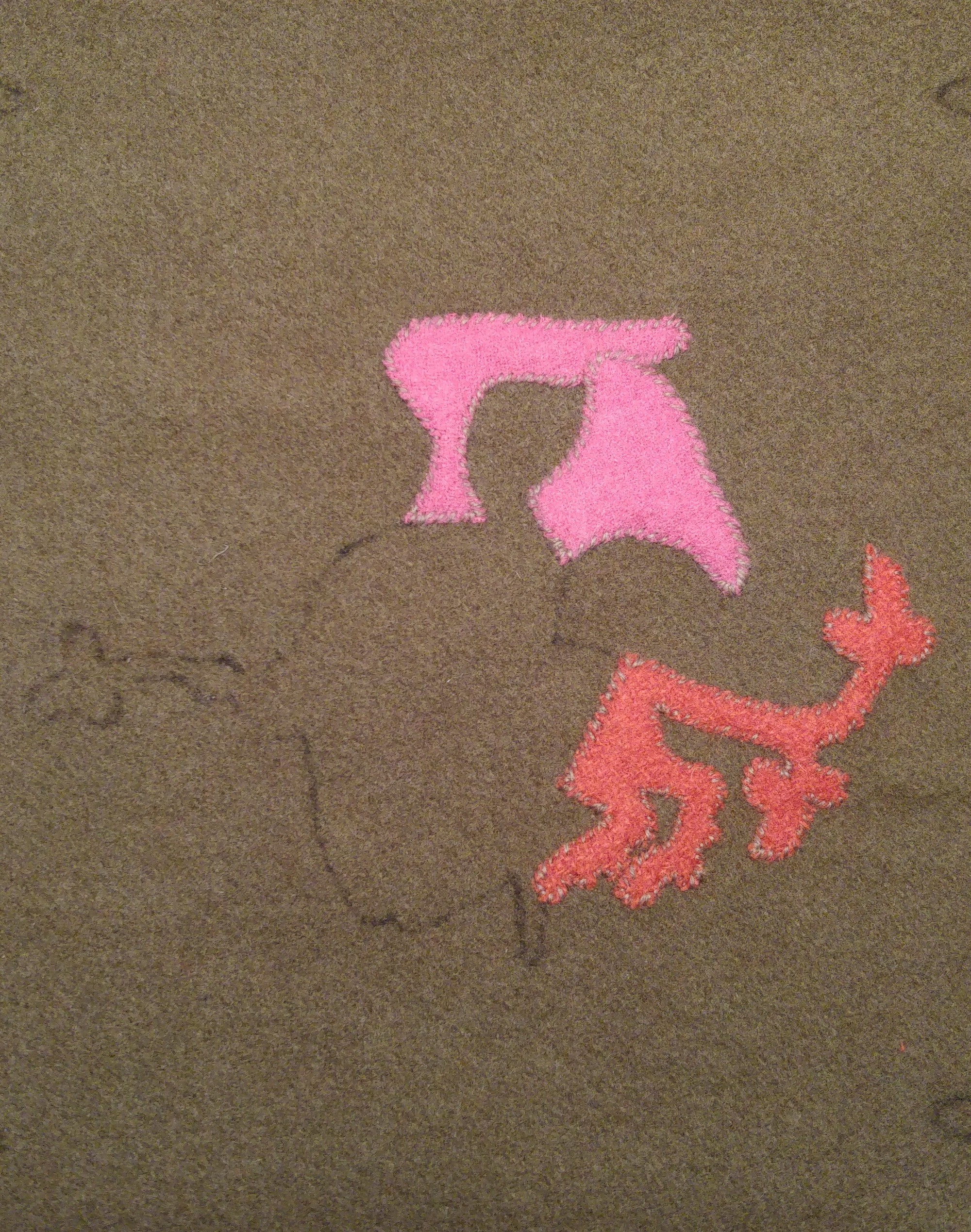
The individual pieces are applied with whip stitch in a background colour-matching wool thread.
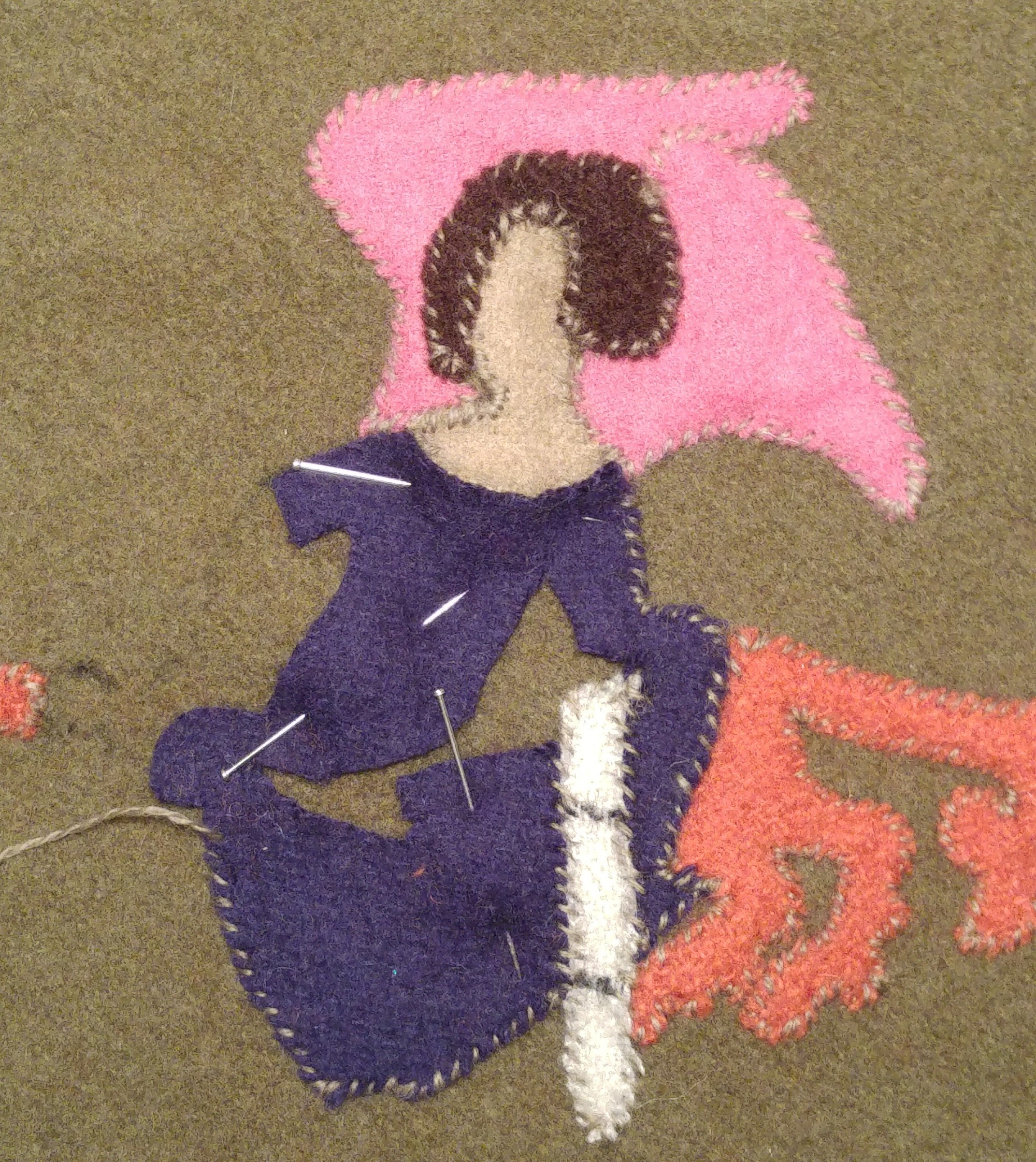
Wherever pieces meet are the edges trimmed together.
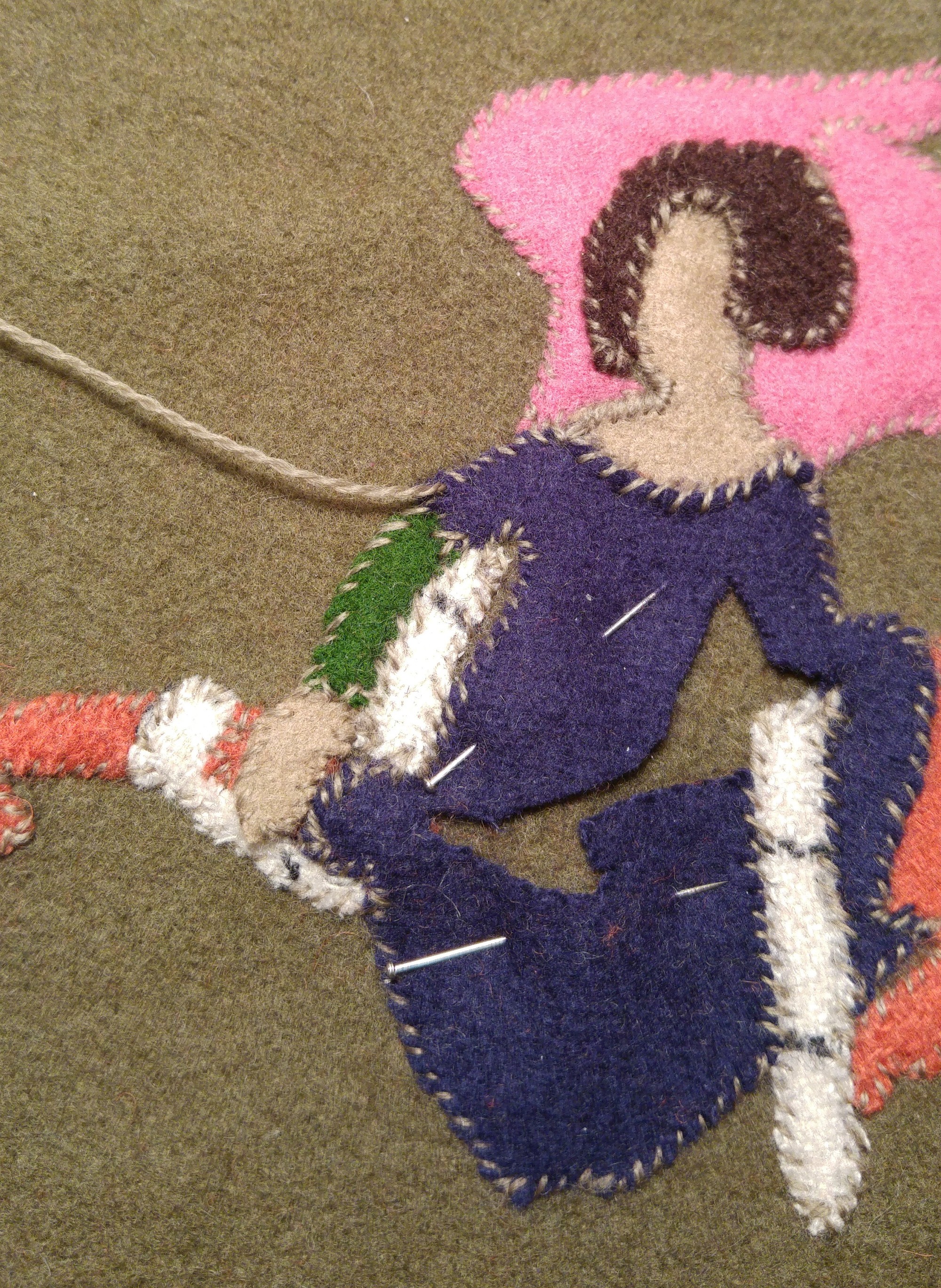
The tiny bits require patience and attentiveness of the sewer.
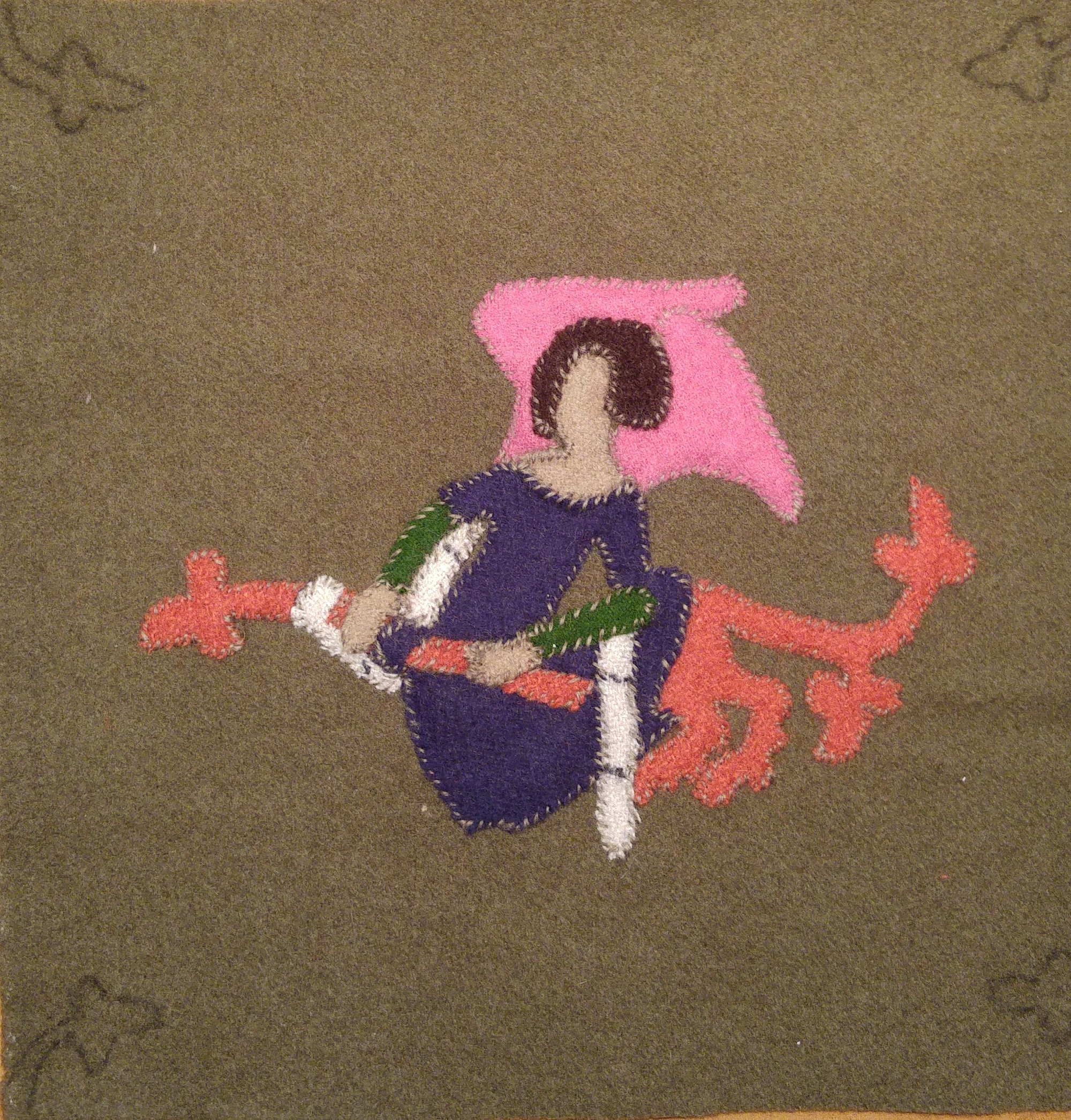
The motiv is finished - next ist the ornamentation of the corners!
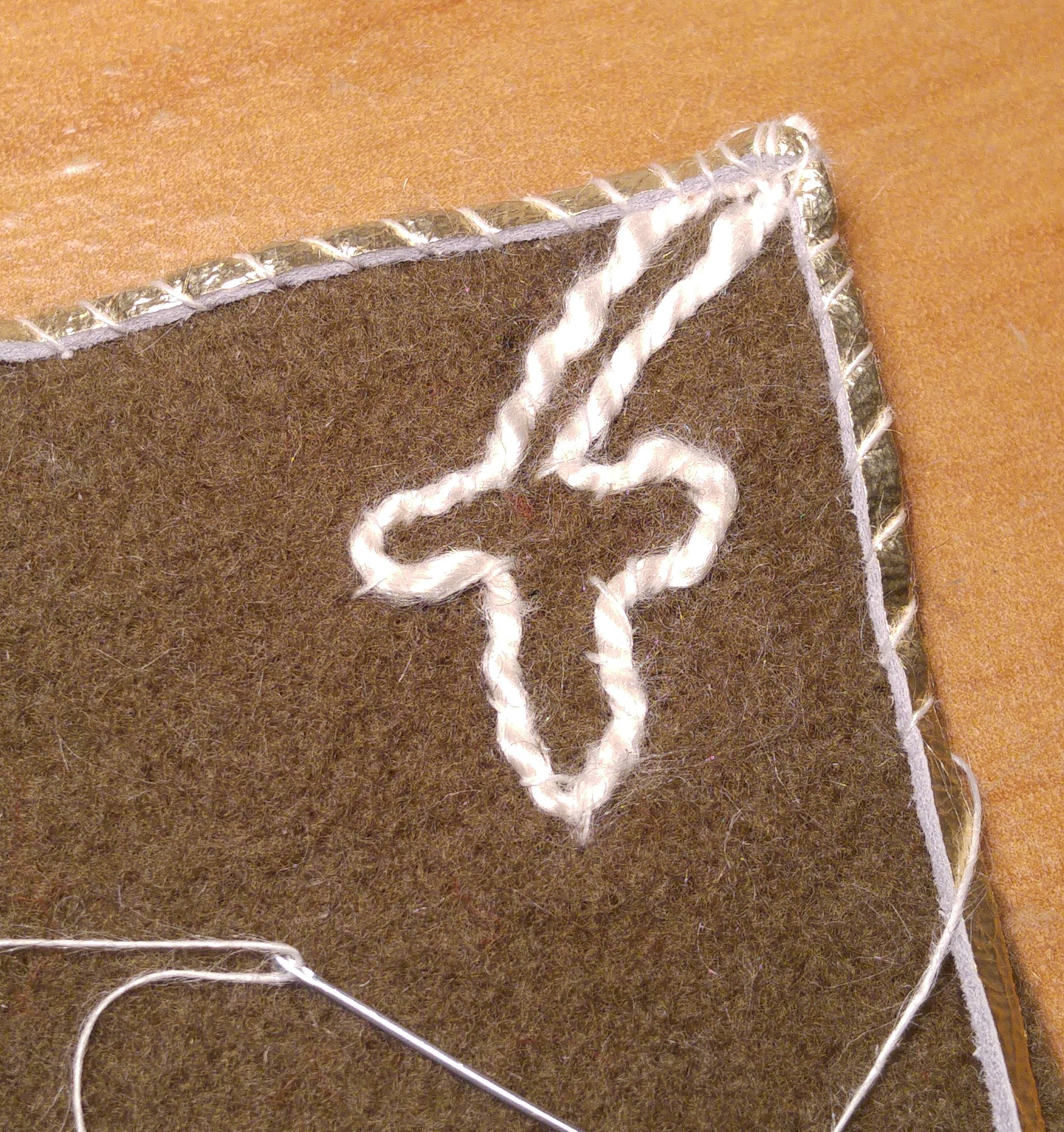
The corners are adorned with a stylized leave made of a couched silk string. The edges are protected against fraying with gilded leather strips.
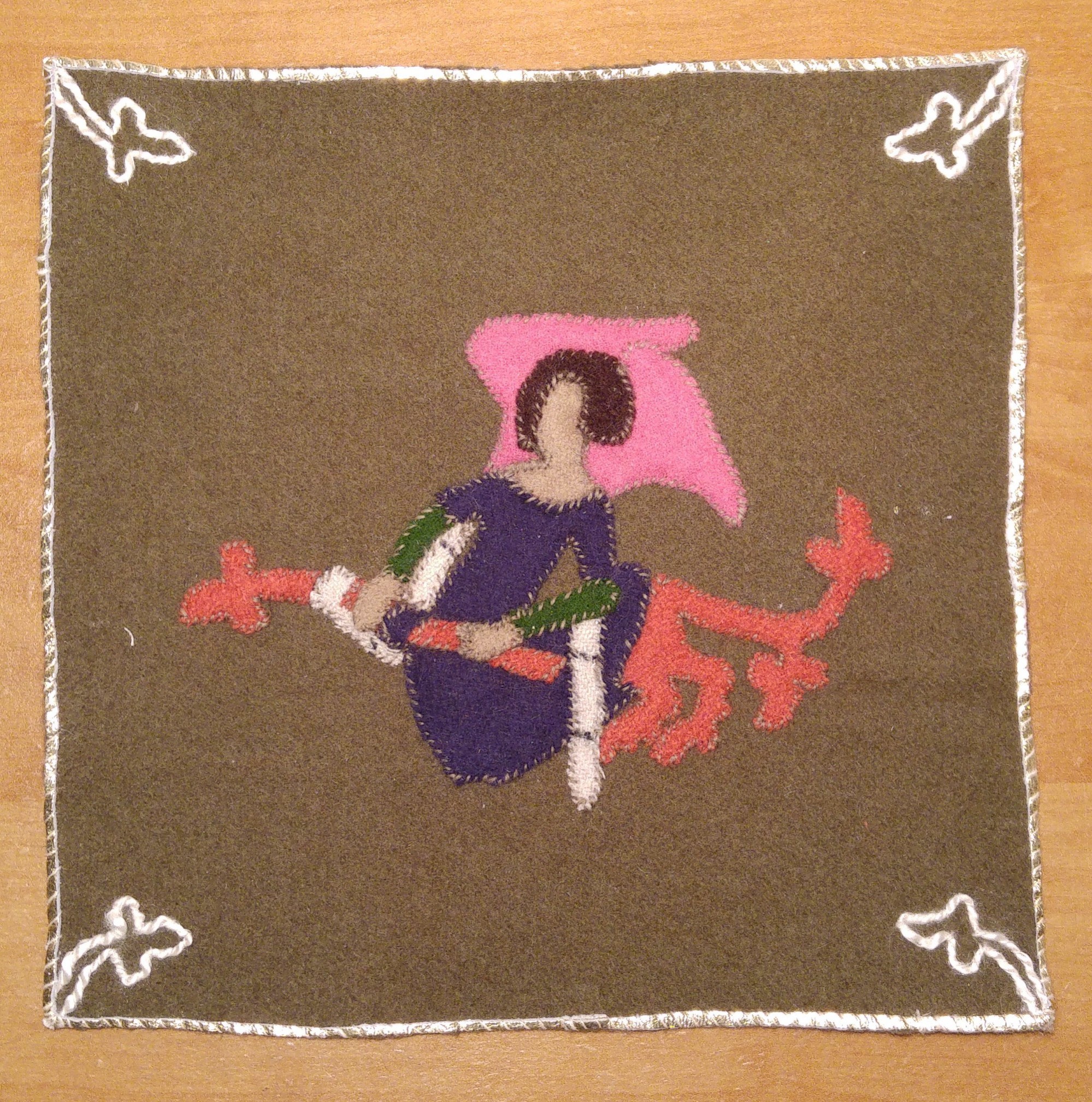
The finished Opus Consutum showpiece features everything that is iconic for the technique: colorful fabric scraps, whip stitch, embellishments in silk strings and the luxurious "bling" thanks to gilded leather strips.

